Paclitaxel-induced epithelial damage and ectopic MMP-13 expression promotes neurotoxicity in zebrafish
- PMID: 27035978
- PMCID: PMC4839466
- DOI: 10.1073/pnas.1525096113
Paclitaxel-induced epithelial damage and ectopic MMP-13 expression promotes neurotoxicity in zebrafish
Abstract
Paclitaxel is a microtubule-stabilizing chemotherapeutic agent that is widely used in cancer treatment and in a number of curative and palliative regimens. Despite its beneficial effects on cancer, paclitaxel also damages healthy tissues, most prominently the peripheral sensory nervous system. The mechanisms leading to paclitaxel-induced peripheral neuropathy remain elusive, and therapies that prevent or alleviate this condition are not available. We established a zebrafish in vivo model to study the underlying mechanisms and to identify pharmacological agents that may be developed into therapeutics. Both adult and larval zebrafish displayed signs of paclitaxel neurotoxicity, including sensory axon degeneration and the loss of touch response in the distal caudal fin. Intriguingly, studies in zebrafish larvae showed that paclitaxel rapidly promotes epithelial damage and decreased mechanical stress resistance of the skin before induction of axon degeneration. Moreover, injured paclitaxel-treated zebrafish skin and scratch-wounded human keratinocytes (HEK001) display reduced healing capacity. Epithelial damage correlated with rapid accumulation of fluorescein-conjugated paclitaxel in epidermal basal keratinocytes, but not axons, and up-regulation of matrix-metalloproteinase 13 (MMP-13, collagenase 3) in the skin. Pharmacological inhibition of MMP-13, in contrast, largely rescued paclitaxel-induced epithelial damage and neurotoxicity, whereas MMP-13 overexpression in zebrafish embryos rendered the skin vulnerable to injury under mechanical stress conditions. Thus, our studies provide evidence that the epidermis plays a critical role in this condition, and we provide a previously unidentified candidate for therapeutic interventions.
Keywords: MMP-13; Taxol; degeneration; epidermis; regeneration.
Conflict of interest statement
The authors declare no conflict of interest.
Figures


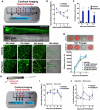
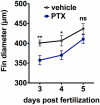


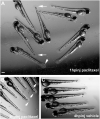

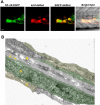


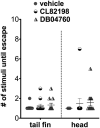




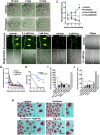
Similar articles
-
Paclitaxel-induced peripheral neuropathy is caused by epidermal ROS and mitochondrial damage through conserved MMP-13 activation.Sci Rep. 2020 Mar 4;10(1):3970. doi: 10.1038/s41598-020-60990-8. Sci Rep. 2020. PMID: 32132628 Free PMC article.
-
Hydrogen peroxide promotes injury-induced peripheral sensory axon regeneration in the zebrafish skin.PLoS Biol. 2011 May;9(5):e1000621. doi: 10.1371/journal.pbio.1000621. Epub 2011 May 24. PLoS Biol. 2011. PMID: 21629674 Free PMC article.
-
Phenotype anchoring in zebrafish reveals a potential role for matrix metalloproteinases (MMPs) in tamoxifen's effects on skin epithelium.Toxicol Appl Pharmacol. 2016 Apr 1;296:31-41. doi: 10.1016/j.taap.2016.02.013. Epub 2016 Feb 18. Toxicol Appl Pharmacol. 2016. PMID: 26908177 Free PMC article.
-
The paradox of paclitaxel neurotoxicity: Mechanisms and unanswered questions.Neuropharmacology. 2014 Jan;76 Pt A:175-83. doi: 10.1016/j.neuropharm.2013.08.016. Epub 2013 Aug 24. Neuropharmacology. 2014. PMID: 23978385 Review.
-
[Role of Transient Receptor Potential Channels in Paclitaxel- and Oxaliplatin-induced Peripheral Neuropathy].Yakugaku Zasshi. 2016;136(2):287-96. doi: 10.1248/yakushi.15-00214. Yakugaku Zasshi. 2016. PMID: 26831807 Review. Japanese.
Cited by
-
Cytotoxicity of 1-deoxysphingolipid unraveled by genome-wide genetic screens and lipidomics in Saccharomyces cerevisiae.Mol Biol Cell. 2019 Oct 15;30(22):2814-2826. doi: 10.1091/mbc.E19-07-0364. Epub 2019 Sep 11. Mol Biol Cell. 2019. PMID: 31509475 Free PMC article.
-
Skin Extracellular Matrix Breakdown Following Paclitaxel Therapy in Patients with Chemotherapy-Induced Peripheral Neuropathy.Cancers (Basel). 2023 Aug 21;15(16):4191. doi: 10.3390/cancers15164191. Cancers (Basel). 2023. PMID: 37627219 Free PMC article.
-
Paclitaxel-Induced Epidermal Alterations: An In Vitro Preclinical Assessment in Primary Keratinocytes and in a 3D Epidermis Model.Int J Mol Sci. 2022 Jan 20;23(3):1142. doi: 10.3390/ijms23031142. Int J Mol Sci. 2022. PMID: 35163066 Free PMC article.
-
Osteoblasts pattern endothelium and somatosensory axons during zebrafish caudal fin organogenesis.Development. 2022 Feb 1;149(3):dev200172. doi: 10.1242/dev.200172. Epub 2022 Feb 7. Development. 2022. PMID: 35129199 Free PMC article.
-
Integrins protect sensory neurons in models of paclitaxel-induced peripheral sensory neuropathy.Proc Natl Acad Sci U S A. 2021 Apr 13;118(15):e2006050118. doi: 10.1073/pnas.2006050118. Proc Natl Acad Sci U S A. 2021. PMID: 33876743 Free PMC article.
References
-
- Gornstein E, Schwarz TL. The paradox of paclitaxel neurotoxicity: Mechanisms and unanswered questions. Neuropharmacol. 2014;76(Pt A):175–183. - PubMed
-
- Sahenk Z, Barohn R, New P, Mendell JR. Taxol neuropathy. Electrodiagnostic and sural nerve biopsy findings. Arch Neurol. 1994;51(7):726–729. - PubMed
-
- Argyriou AA, Koltzenburg M, Polychronopoulos P, Papapetropoulos S, Kalofonos HP. Peripheral nerve damage associated with administration of taxanes in patients with cancer. Crit Rev Oncol Hematol. 2008;66(3):218–228. - PubMed
-
- Nakata T, Yorifuji H. Morphological evidence of the inhibitory effect of taxol on the fast axonal transport. Neurosci Res. 1999;35(2):113–122. - PubMed
Publication types
MeSH terms
Substances
Grants and funding
LinkOut - more resources
Full Text Sources
Other Literature Sources
Molecular Biology Databases
Research Materials
Miscellaneous

